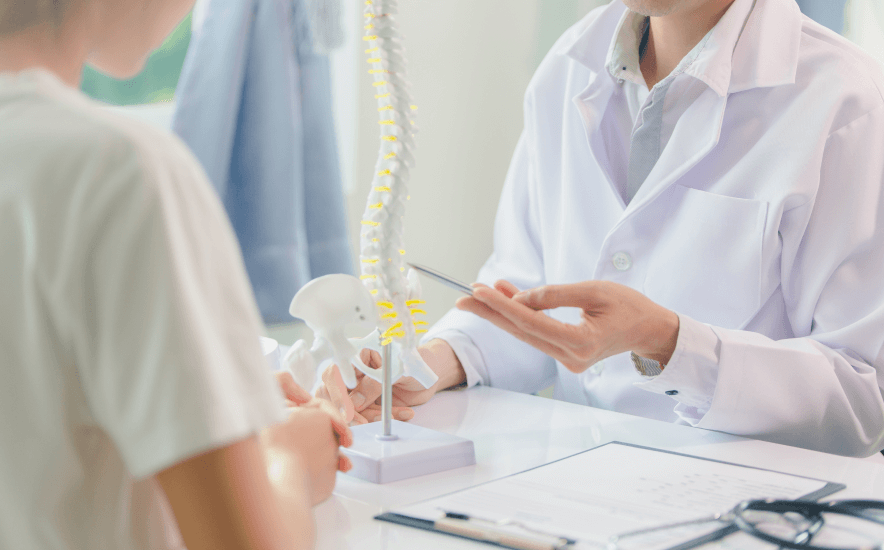What is Restorative Neurostimulation?



Benefits
Treatment of Root Cause
Long-Term Pain Relief
Improved Spinal Stability
Minimally Invasive Procedure
Improved Physical Function
Reduction in Medications
Adjustable Therapy
Reversible & Safe
Expanded Guide
Restorative neurostimulation is an advanced treatment designed to address chronic low back pain, particularly in patients with multifidus muscle dysfunction. The multifidus is a small but essential muscle located along the spine, responsible for stabilizing and controlling spinal movements. Dysfunction in this muscle is often associated with chronic low back pain, which can be debilitating and resistant to traditional treatments like medication, physical therapy, or even surgery. Restorative neurostimulation offers a promising, minimally invasive solution for patients who have not found relief through conventional methods.
Understanding Multifidus Dysfunction
Multifidus dysfunction occurs when the muscle loses its ability to function optimally, often due to injury, degeneration, or a lack of proper neural activation. This dysfunction leads to instability in the spine, which in turn causes chronic pain. Unlike superficial back muscles, the multifidus plays a crucial role in controlling the fine movements of the vertebrae and providing core spinal support. When this muscle weakens or becomes inactive, patients experience a loss of spinal stability, resulting in persistent pain and a reduced ability to perform everyday activities.
Research has shown that multifidus dysfunction is a common underlying factor in chronic low back pain, especially when imaging studies fail to reveal clear structural problems, such as herniated discs or fractures. In many cases, the multifidus muscle atrophies, and its inability to contract properly leaves the spine vulnerable to stress, leading to long-term discomfort and impaired movement.
How Restorative Neurostimulation Works
Restorative neurostimulation addresses this dysfunction by delivering low-level electrical pulses to the nerves that control the multifidus muscle. The therapy involves the implantation of a small neurostimulator device near the spine, typically under the skin in the lower back. This device is connected to leads that are positioned near the nerves responsible for activating the multifidus muscle. When activated, the neurostimulator sends mild electrical impulses to the nerves, prompting the multifidus to contract and engage in normal function.
By stimulating the muscle directly, the therapy helps restore the normal activation patterns of the multifidus, improving spinal stability and reducing pain. This electrical stimulation is not painful for patients and can be adjusted to the specific needs of the individual, ensuring optimal results.
Benefits
Restorative neurostimulation offers several significant benefits for treating multifidus dysfunction and chronic low back pain. First, it directly targets the root cause of the pain by addressing the multifidus muscle dysfunction, rather than just masking the symptoms. This leads to long-term pain relief, with clinical studies showing that 64% of patients experience a 50% or greater reduction in pain intensity after one year of treatment. Additionally, the therapy improves spinal stability by restoring the normal function of the multifidus muscle, which helps reduce the risk of further injury and recurrent pain.
One of the key advantages of restorative neurostimulation is that it is a minimally invasive procedure, involving only a small incision for device implantation. This results in less surgical trauma, lower risk of complications, and a faster recovery compared to more invasive procedures like spinal fusion. Furthermore, the therapy significantly improves physical function and mobility, with over 75% of patients reporting better ability to perform daily activities, thereby enhancing their overall quality of life.
Another important benefit is the reduction in reliance on pain medications. As patients experience lasting pain relief, they often reduce their use of painkillers, minimizing the risks and side effects associated with long-term drug use. Restorative neurostimulation is also highly customizable, allowing the settings to be adjusted to meet the specific needs of each patient, ensuring optimal and personalized therapy. Finally, the device is reversible and safe—if necessary, it can be removed without long-term consequences, making it a flexible and effective treatment option for chronic back pain sufferers.
Conclusion
Restorative neurostimulation for multifidus dysfunction represents a significant advancement in the treatment of chronic low back pain. By targeting the underlying issue of muscle dysfunction, this therapy offers long-lasting pain relief and improved spinal stability. With its proven effectiveness, minimal invasiveness, and ability to improve patients’ quality of life, restorative neurostimulation is an increasingly valuable option for individuals suffering from debilitating low back pain that has not responded to conventional treatments.
Frequently Asked Questions
Have more questions? Schedule a consultation with Dr. Patel to gain additional insights and discuss treatment options. We are committed to advancing your health through patient education and a safe, minimally invasive approach.
Gramercy Center
Take the first step towards a healthier life by scheduling your initial consultation with Dr. Patel. At our clinic, we specialize in minimally invasive procedures that offer faster recovery, improved function, and decreased pain. Our client-centered approach ensures that you receive the highest quality care tailored to your unique needs. We look forward to offering you an exceptional experience.
